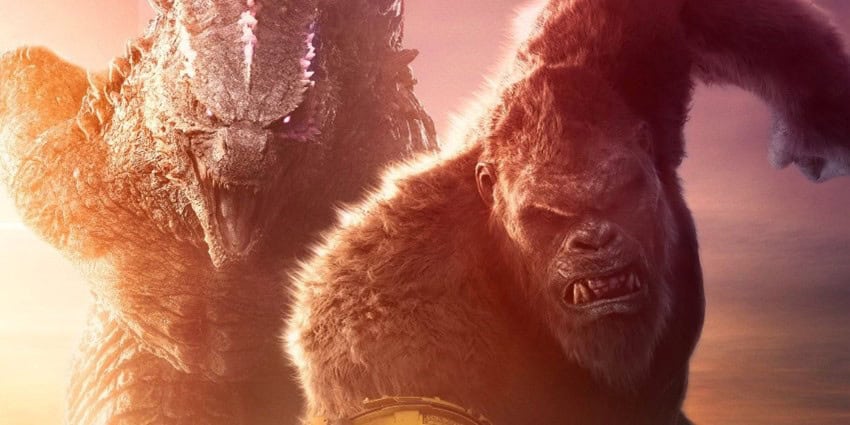By Andrew Jenck
Over the past few months, the general perception of Godzilla has changed drastically with the Oscar-winning Godzilla: Minus One, framing the monster as a catalyst for survivor’s guilt and an inconsiderate government regarding citizens’ lives. Released under Toho, the Japanese studio that Godzilla was created under, was a surprise hit, capturing audiences with its maturity, thrilling set pieces, and investment of its human characters. Godzilla x Kong – The New Empire, licensed by Toho to Legendary Pictures, depicts the lizard as an anti-hero who naps in the Roman Colisseum between battles against giant apes living in the center of the Earth in which human characters are an afterthought. The uninitiated may call this another westernized misinterpretation of an eastern work but factoring in the 70-year history of Zilla, the Americanized story is more reverent than it appears. This monster team up delivers on the brawls and spectacle, providing a breezy, occasionally creative picture with paper thin storytelling.
Although originally created as a metaphor for nuclear destruction, Japan has fun with the King of Monsters, squaring him off against dragons, oversized bugs, and King Kong dating back to the 1960s. Any time he fights another kaiju, the film would lean into absurdity, lacking subtlety of its themes. GXK takes this approach only on a larger budget. Extensive scenes feature Kong and Zilla in their natural state, often without any humans. Personalities are translated through motion capture performances and sound design. At one point, Kong has his dinner interrupted, realizing he needs to see a dentist (it makes sense in context).
Human characters, as with the classic Japanese films, serve to deliver exposition, establishing the backstory and delivering comedic one-liners. Quick edits and circling shots are rampant in their scenes, as if the film rushes to cut back to the giant ape with his battle axe. On occasion, the film will touch upon themes of motherhood and preserving culture, only to be placed on hold and resolving them is sporadic. Some rewrites could’ve integrated them into the story more naturally, particularly a deaf indigenous girl, played by Kaylee Hottle, parallels Kong’s feeling of isolation. Some viewers may be annoyed by their one note personalities, finding momentum to slow whenever on screen.
Simultaneously, Kong himself is made to be the clear lead. Through various set pieces and interactions with other apes, he’s portrayed as this cunning warrior with a gentle side. Interactions with other apes are broadly conveyed but with creative bits and a strange reverence that could only be found in a kaiju film. The central conflict is so heavily tied to Kong, Godzilla is more of an afterthought, mostly upgrading himself for the climax. Such an imbalance can detriment the pacing, not showing Godzilla’s personality until the third act where he’s shown as overly aggressive but willing to cooperate when needed.
Worldbuilding is thorough, involving a colony of apes lead by the villain and an indigenous tribe tied to the monsters, it contains its own sense of logic. Powers and abilities are established ahead, setting up a thrilling final battle involving the monsters. Unlike other CGI-heavy films, GxK is weight to it. Many sequences deliver on the shlock, delivering the feel of an action cartoon, in a good way.
Although on the opposite spectrum of Japan’s latest offering, this monster team-up still proves to be entertaining, creative in the right places and a full embrace of its campier roots. Some may want more substance, but it can be found in broader terms with a few structural issues. Certain elements, such as pacing and character writing could’ve been refined. Still, if Minus One director Takashi Yamazaki can enjoy this campy endeavor, then there’s sure to be fun with this Godzilla.


